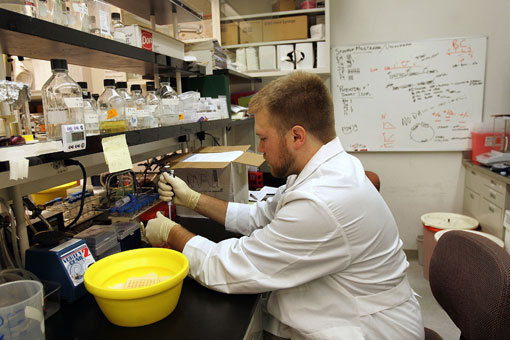Developments abound at the NCSB
Advances at one of the world’s most highly regarded biotech research plants are coming thick and fast

The University of Missouri is the home of the National Centre for Soybean Biotechnology. This is mainly due to the university’s exemplary record of development in the areas of soybean genetics and other related subjects. The aim of the centre is to develop approaches that will be of benefit to both the soybean industry and academic research. The work that is carried out at the centre includes bioengineering technologies for the industry and help with improving the profitability of the soybean, by reducing problems with pests and improving the yield. Research is also being carried out on improving the tolerance to stress and providing educational resources for students at all levels. Outreach programmes will be put into place to ensure that both manufacturers and the general public are aware of the work that is being carried out and the latest practical developments resulting from this research.
Areas that are being covered include the Soybean Cyst Nematode, one of the plant’s most destructive pests. Yield production falls significantly when this pest is present and can lead to losses of up to $1bn for the industry each year. Also being researched is the Soybean Structural Genomics, which are the genes of the plant. These can be used to both clone the plant and create a genetic map. Root Hair Systems Biology is another area of research for the National Centre for Soybean Technology. This looks at the possible infections of the legume root hair, an area that has previously been very difficult to study.
Recent developments at the centre include a programme dedicated to the study of Biotic stress. This looks at the ways in which plant breeding is carried out and the discovery of genes and looks at how they can become resistant to disease. At the present time, 10 out of 100 possible diseases are particularly damaging for soybeans and a number of new approaches are being used to eradicate them. Soybean cyst nematode is one such disease, while others include frogeye leaf spot, soybean rust and reniform nematode.
Seed composition is an area of research that has been particularly successful. The aim here is to improve the uses of soybean in foods and industrial markets. A good example is the modification of the fatty acid profile of soybean oil so that it can be used in a wider range of products in the food industry. Improvements in the oil are expected to lead to healthier options becoming available.
Collaboration has been organised between scientists in the food industry from a number of plant research centres in the US. This new group will form the Association of Independent Plant Research Institutes and will discuss many issues that are related to the agriculture industry today. As members have access to more than 60 laboratories around the country and more than 400 staff members, they are able to offer information and research on a variety of topics. This includes the analysis of chemicals and proteins that are found in plants, as well as taking 3D images of the plant’s structures and proteins.













